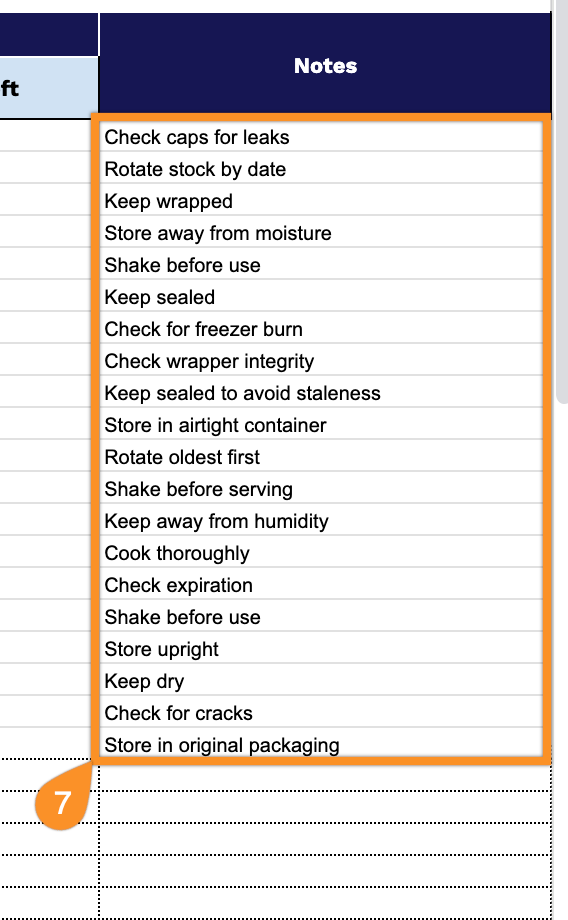Many people struggle with pantry organization: buying items they already have, letting food expire unnoticed, or running out of staples at inconvenient times. A simple inventory system can address these common challenges while making meal planning and grocery shopping more efficient.
Our free pantry inventory template provides a straightforward way to track what you have on hand, monitor expiration dates, and maintain adequate stock levels.
The template is available in three formats (Google Sheets, Excel, and PDF), ensuring accessibility regardless of your preferred platform or technical setup.
The template is suitable for various household types and can be customized to meet your specific pantry organization needs.
Quick Jump
ToggleWhat Is a Pantry Inventory Spreadsheet?
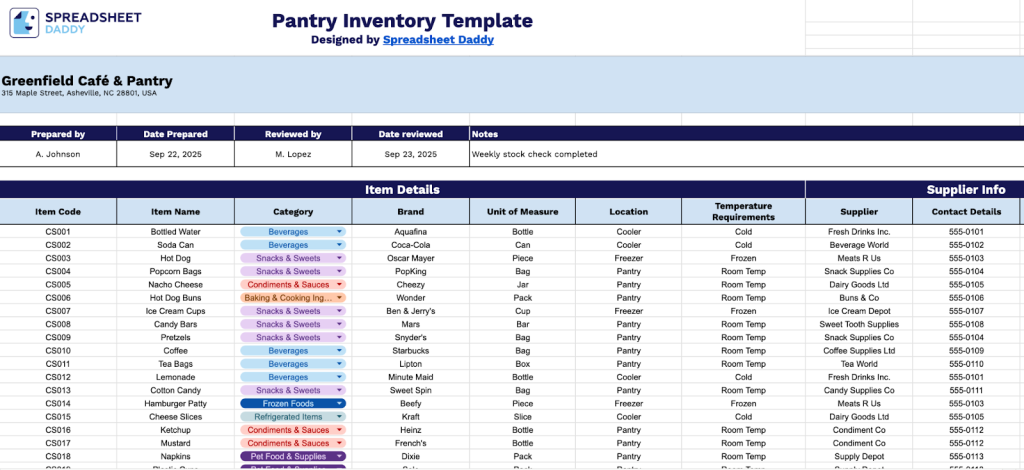
A pantry inventory spreadsheet is basically a simple way to keep track of all the food you have at home using a digital list or table.
It’s a game-changer for busy households because it prevents you from buying things you already have, helps you use up food before it goes bad, and makes deciding what to cook for dinner significantly easier.
Download Spreadsheet Daddy’s Free Pantry Inventory Management Spreadsheet
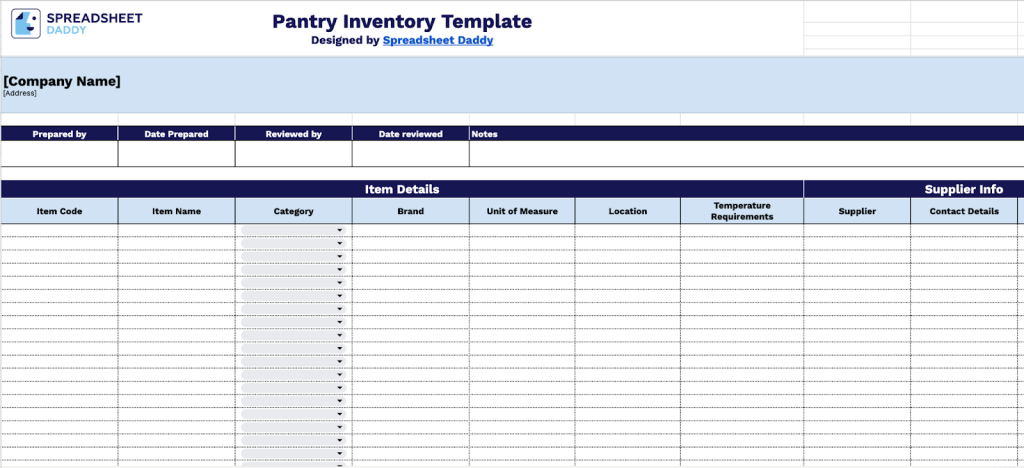
Our pantry inventory template helps you stay organized by tracking all your food items, supplies, and ingredients.
The template is flexible and can be tailored to your needs by adding or removing columns as necessary.
What’s included
- Complete pantry tracking setup: This template provides a straightforward way to record all your food items with company information at the top and a detailed tracking table below. Each item gets its own code, name, category, brand, and storage location for comprehensive inventory management.
- Built-in supplier management: Track vendor contact details and lead times directly in the template. This helps streamline ordering processes and maintain consistent supplier relationships without requiring additional documentation systems.
- Intelligent inventory monitoring: Monitor current stock levels with quantity on hand and par level columns to maintain appropriate inventory levels. Unit cost tracking provides visibility into purchasing expenses and budget management.
- Expiration date tracking system: Manage food safety with dedicated columns for received dates, expiration dates, and calculated days remaining. This system supports proper stock rotation and helps reduce waste from expired products.
- Ready-to-use format: The template features professional headers for company details, preparation dates, and reviewer information, as well as pre-formatted rows. The structure can be easily expanded to accommodate growing inventory needs while maintaining consistent formatting.
How to Use Our Pantry Inventory Spreadsheet Template
1. Use this template by making a personal copy in Google Sheets or by downloading it as Excel or PDF.
2. Fill in your business name, street address, and stock coordinator particulars alongside the finalization date. Specify the manager’s name and inspection date. Apply the Notes field to capture any details.

3. Complete the Item Details section by entering all essential product identification and classification information:
- Item Code: Enter the unique identifier or SKU assigned to track this specific pantry item.
- Item Name: Record the complete product name as it appears on packaging or inventory records.
- Category: Specify the food classification group (canned goods, grains, spices, condiments, etc.).
- Brand: Include the manufacturer or brand name for accurate product identification.
- Unit of Measure: Define how the item is counted or measured (each, pounds, ounces, cases, etc.).
- Location: Document the specific pantry zone, shelf, or storage area where the item is kept.
- Temperature Requirements: Note any special storage conditions needed (room temperature, refrigerated, frozen, etc.).
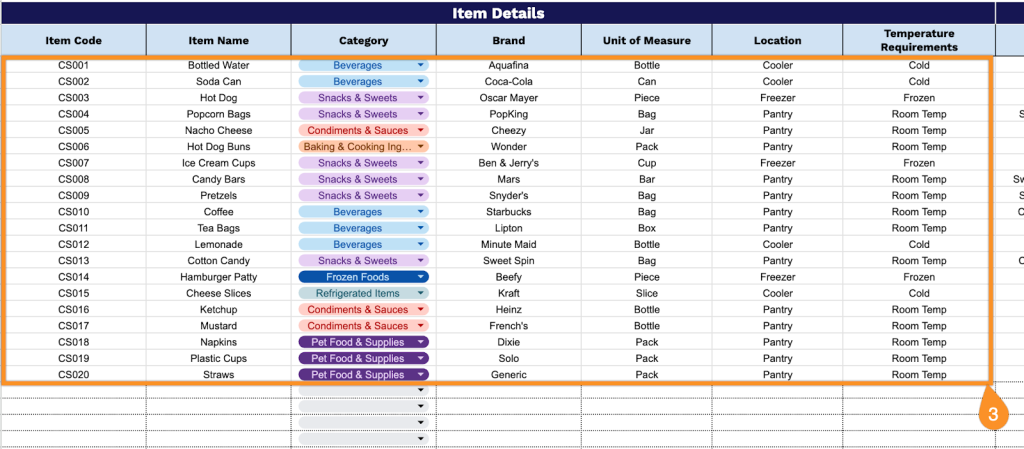
4. Fill in the Supplier Information section by documenting all vendor contact and procurement details:
- Supplier: Enter the name of the primary vendor or store where this item is purchased.
- Contact Details: Provide phone numbers, email addresses, or account information for the supplier.
- Lead Time: Record the typical number of days required from order placement to delivery.
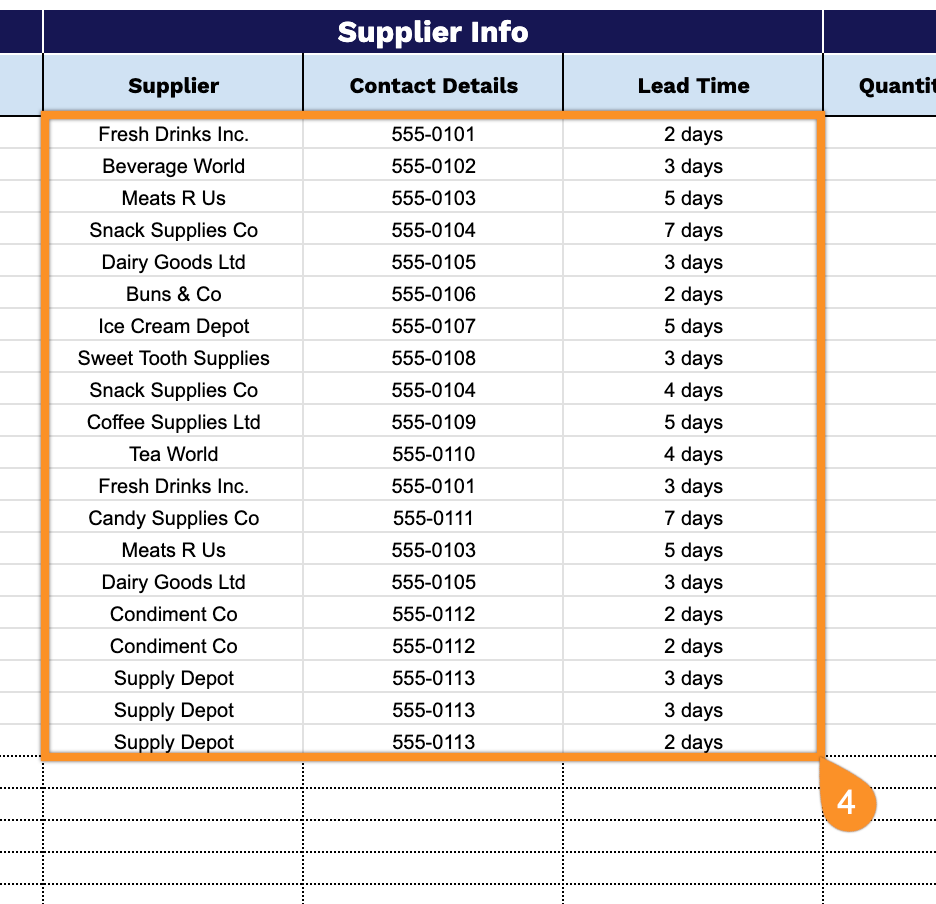
5. Document current stock levels in the Inventory Tracking section for effective quantity management:
- Quantity on Hand: Enter the current number of units physically available in your pantry.
- Par Level: Set the minimum quantity threshold that triggers the need to reorder this item.
- Unit Cost: Include the price paid per individual unit for accurate budget tracking.
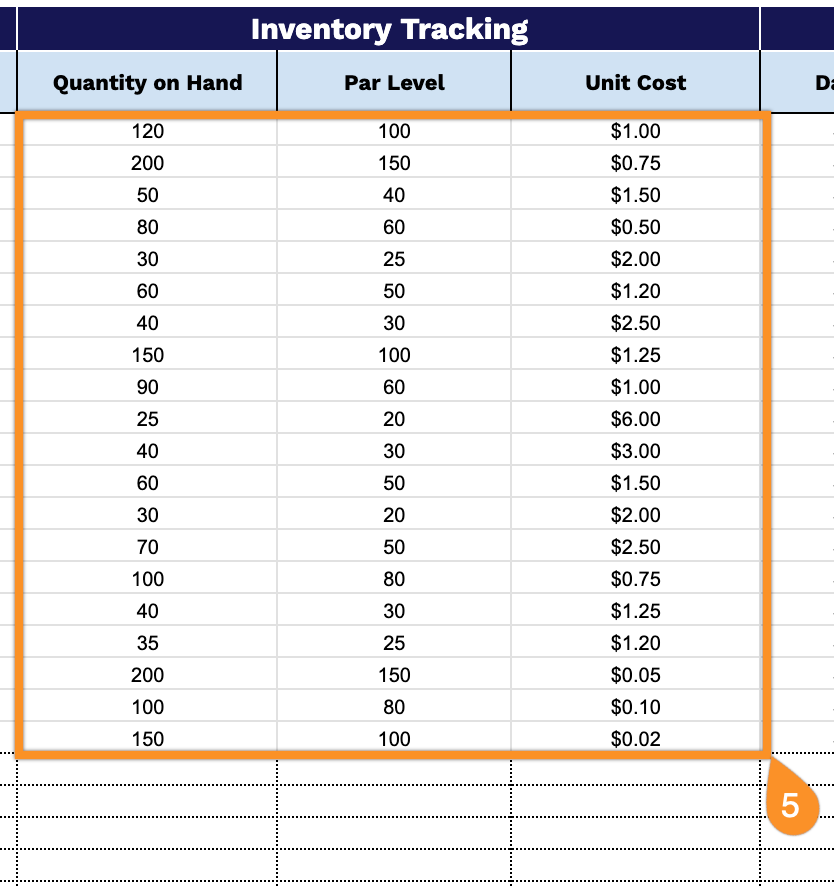
6. Monitor freshness and timing in the Date-Specific Tracking section to prevent waste and ensure quality:
- Date Received: Record when the item was purchased or added to your pantry inventory.
- Expiration Date: Document the manufacturer’s recommended use-by or best-before date.
- Days Left: The template will automatically calculate the remaining time before the item reaches its expiration date.
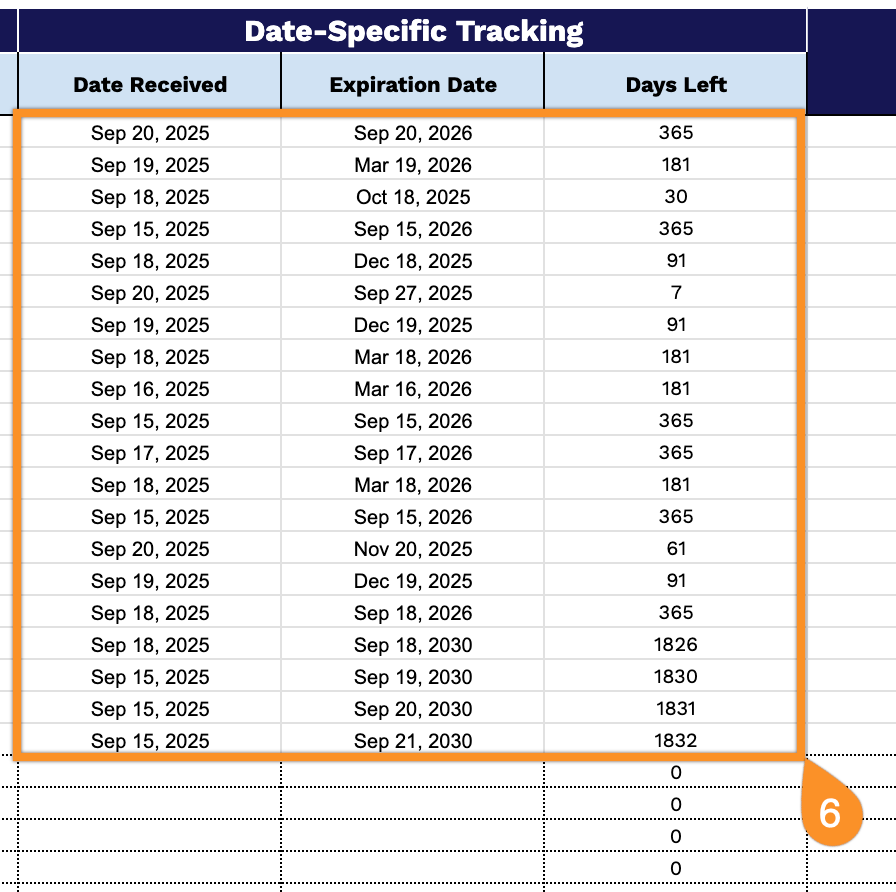
7. Fill the Notes section with any other applicable details.
